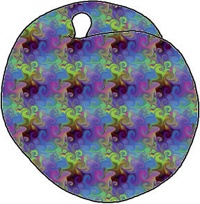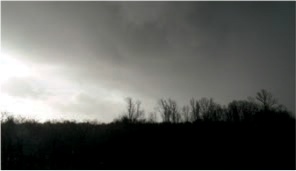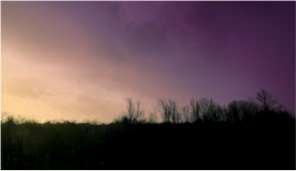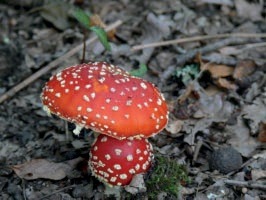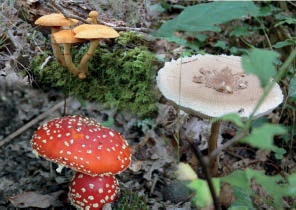- The Book of GIMP: A Complete Guide to Nearly Everything
- Introduction
- I. Learning GIMP
- 1. Getting Started
- 2. Photograph Retouching
- 2.1 Tutorial: Enhancing Badly Taken Photographs
- 2.2 Global Transformations
- 2.3 Local Transformations
- 2.4 Retouching a Scanned Photograph
- 2.5 Advanced Techniques
- 2.6 Exercises
- 3. Drawing and Illustration
- 3.4 Dodging, Burning, and Smudging
- 3.5 The Digital Painting Process
- 3.6 Drawing Shapes
- 3.7 Exercises
- 4. Logos and Textures
- 5. Composite Photography
- 6. Animation
- 7.1 Tutorial: Extracting Information from a Picture
- 7.2 The Principles of Preprocessing
- 7.3 Filtering
- 7.4 Edge Detection
- 8. Designing a Website
- 8.5 Exercises
- II. Reference
- 9. The GIMP Interface
- 10. Display
- 11. Layers
- 12. Color
- 13. Selections
- 14. Masks
- 15. Drawing Tools
- 16. Transformation Tools
- 17. Filters
- 17.1 Common Properties
- 17.2 The Blur Filters
- 17.3 The Enhance Filters
- 17.4 The Distorts Filters
- 17.5 The Light and Shadow Filters
- 17.6 The Noise Filters
- 17.7 The Edge-Detect Filters
- 17.8 The Generic Filters
- 17.9 The Combine Filters
- 17.10 The Artistic Filters
- 17.11 The Decor Filters
- 17.12 The Map Filters
- 17.13 The Render Filters
- 18. Animation Tools
- 19. Obtaining and Printing Images
- 20. Image Formats
- 21. Scripts and Plug-ins
- 22. Customizing GIMP
- III. Appendices
- A. Vision and Image Representation
- B. Tips and Hints for Selected Exercises
- C. Resources
- D. Frequently Asked Questions
- D.1 What Does the Future Hold?
- D.2 How...?
- How can I draw a straight line?
- How can I draw a circle?
- How can I create an outline around text?
- How do I save a selection within an image to a file?
- How do I merge an image from another file with the current image?
- How do I get small fonts to look as nice as large fonts?
- How do I set keyboard shortcuts?
- How do I set up GIMP so a layer becomes active when I click an element in that layer?
- How do I fill a layer or selection with transparency?
- How do I draw in a different color?
- How do I add a blur to my image?
- How can I paint along the outline of a rectangle?
- How do I move existing guides?
- How do I get rid of a floating selection?
- How do I paint in a transparent area?
- How can I see the marching ants and know whether my selection has been made?
- How can I add color to a black and white image?
- How do I resize my photo to a precise size, say 5 × 7 cm?
- How do I set the foreground color to a color in my image?
- How can I keep text sharp when scaling it down?
- How do I copy a layer mask to another layer mask?
- How can I search for a specific font, brush, or pattern?
- How do I erase with a tool other than the Eraser?
- How can I use the Scale tool to enlarge an image?
- How can I find a dialog I closed by accident?
- How can I invert grayscale values without changing the colors?
- How do I crop with a defined aspect ratio?
- D.3 Why...?
- Why are some of the filter names grayed out?
- Why is nothing happening?
- Why doesn’t anything happen when I try to cut, paste, or apply a filter to a selection?
- Why can’t I modify the channel I built by saving a selection?
- Why can’t I change my image after I saved a selection to a channel?
- Why do my paint strokes appear on the image when I try painting on a layer mask?
- Why did the size of my file increase when I exported it to JPEG with 100% quality?
- Why can’t I draw in the color I chose?
- E. Installing GIMP
- F. Batch Processing
- Index
- About the Authors
- Copyright
In this section, we introduce tools that are designed to fill an area with a color, pattern, or gradient.
Use the Bucket Fill tool (Image: Tools > Paint Tools > Bucket Fill, ![]() , or the Toolbox button shown in Figure 3-61) to fill an area with a solid color or pattern either by clicking in the area that you want to fill or by dragging the foreground or background color and dropping it over the image.
, or the Toolbox button shown in Figure 3-61) to fill an area with a solid color or pattern either by clicking in the area that you want to fill or by dragging the foreground or background color and dropping it over the image.
When you click to fill, you fill only the contiguous space with that color or pattern. This means that a line drawing can act as a boundary. For example, we clicked in the line drawing of a peach to fill it with dark orange (Figure 3-62) and then a swirly pattern (Figure 3-63).
Gradients work well in the background of buttons (Figure 3-64), banners, or drawings. They can also add simple shading effects or a unique touch to a photo.
For example, we added color to enhance the dramatic look of the stormy sky photo in Figure 3-65. The cloud front is diagonal to the horizon. We applied the gradient perpendicularly to the cloud front, so that areas with heavier cloud cover are darker, as shown in Figure 3-66.
You can also use gradients in layer masks to create smooth transitions between layers. This is how we combined the mushrooms from Figure 3-67 to Figure 3-69 to create Figure 3-70. Gradients are used in layer masks to transition between black and white, as shown in Figure 3-71. White areas are visible, black areas are transparent, and gray areas create the transition.
Apply patterns to decorate a background, create text effects (as shown in Figure 3-72), or make the surface of an object look more organic. See The Patterns Dialog and The Patterns Dialog for more details.
-
No Comment

